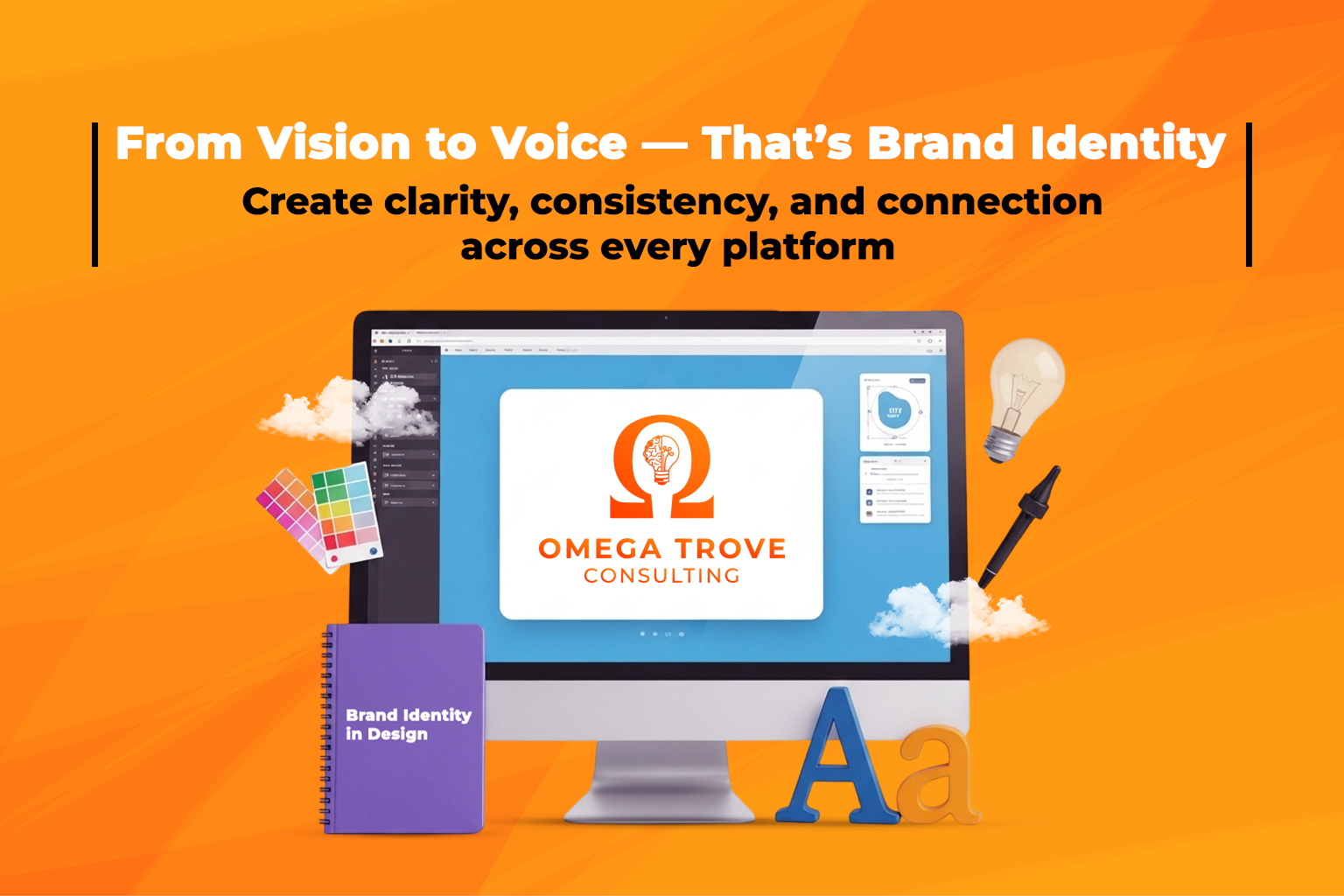What Is Brand Identity in Design?
Brand Identity is the collection of visual, verbal, and emotional elements that represent a brand. It includes logos, typography, colors, voice, and overall personality. A strong identity creates recognition and builds trust. At Omega Trove, we design brand identities that help businesses connect with their audiences and grow with clarity.
What Does Brand Identity Mean in Branding & Creative Design?
In branding, Brand Identity is the face and voice of a business. For example:
- A café’s logo, color palette, and typography create a recognizable look.
- The brand’s messaging tone and visuals build trust across touchpoints.
Consultants use brand identity to help businesses communicate consistently and stand out in competitive markets.
Why Brand Identity Matters for Business Strategy
Identity is more than design — it’s a strategic asset.
Benefits of Strong Brand Identity:
- Builds recognition and trust with customers
- Creates consistency across all channels and touchpoints
- Differentiates from competitors
- Supports emotional connection and loyalty
- Strengthens long-term equity and growth potential
How Omega Trove Builds Brand Identity
Omega Trove blends clarity, craftsmanship, and community insight into identity design:
- Developing logo systems and marks for recognition
- Creating visual style guides for consistency
- Establishing brand voice and tone for messaging clarity
- Designing color palettes and typography that reflect personality
- Aligning identity with business strategy and customer personas
Learn more about our Branding services.
Related Terms You Should Know
- Logo Mark – A core element of visual brand identity.
- Visual Style Guide – A document that ensures brand consistency.
- Brand Persona – The humanized character of a brand’s identity.
Frequently Asked Questions
What is brand identity in design?
Brand identity in design is the combination of visual, verbal, and emotional elements — such as logos, typography, color palettes, and voice — that define how a brand presents itself and is recognized by audiences.
Why is brand identity important in branding?
Brand identity is important because it creates recognition, builds trust, and ensures consistency across all customer touchpoints. A strong identity helps businesses stand out and connect emotionally with their audience.
What’s the difference between brand identity and brand image?
- Brand identity: What a company creates — logos, colors, messaging, and visuals.
- Brand image: How customers actually perceive and experience the brand.
What elements are included in brand identity?
Core elements of brand identity include:
- Logo and logo variations
- Typography and fonts
- Color palette
- Brand voice and tone
- Visual style guide
- Photography, icons, or supporting graphics
Can small businesses benefit from a strong brand identity?
Yes. Clear, professional brand identity helps even small businesses build credibility, look trustworthy, and compete effectively against larger competitors.
How does brand identity influence customer loyalty?
Consistent brand identity fosters familiarity and emotional trust. When customers recognize and relate to a brand’s visuals and voice, they are more likely to stay loyal and choose it repeatedly.
What role does a logo play in brand identity?
A logo is often the most recognizable part of brand identity, but it is only one element. True brand identity also includes colors, fonts, messaging, and the overall brand experience.
How is brand identity developed?
Brand identity is developed through research, strategy, and design. It typically involves defining values and audience personas, creating logos and visuals, and testing designs to ensure they align with business goals.
How does brand identity connect to marketing?
A strong brand identity ensures marketing campaigns are consistent, memorable, and aligned with brand values. It provides the foundation for advertising, digital content, packaging, and customer communication.
What makes a brand identity successful?
A successful brand identity is clear, consistent, and authentic. It reflects a company’s values, resonates with its audience, and scales across all platforms — from digital to print to in-person experiences.




